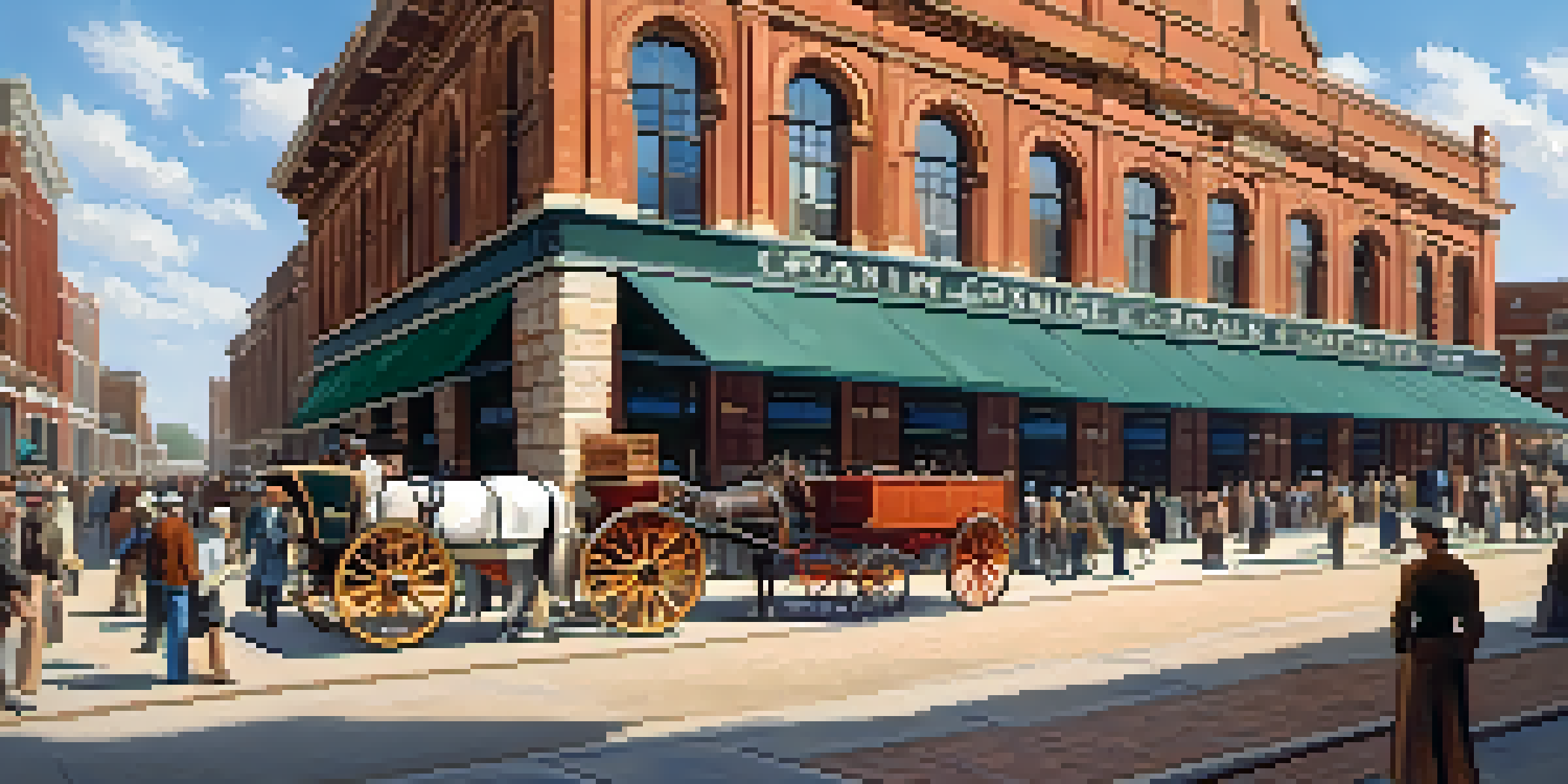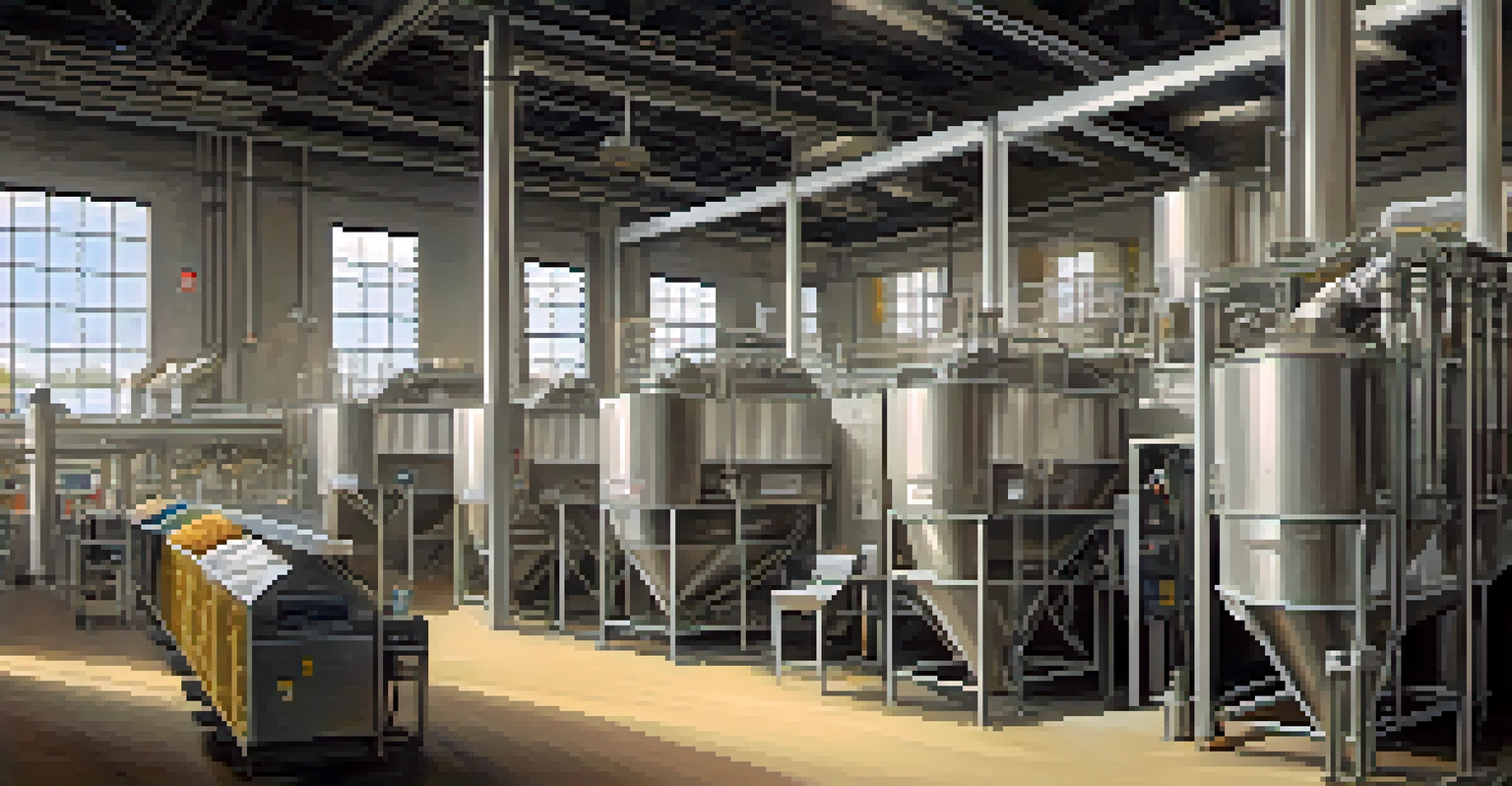The Flour Milling Capital: Minneapolis' Economic Boom

Minneapolis: The Birthplace of Flour Milling
Minneapolis isn't just known for its lakes and parks; it earned the title of 'Flour Milling Capital of the World.' The city's unique location on the banks of the Mississippi River provided easy access to water power and transportation, which were essential for early milling operations.
The flour milling industry not only fed a nation, but it also created a diverse community, fostering economic growth and cultural richness.
In the mid-19th century, as settlers flooded into the Midwest, demand for flour soared. Entrepreneurs like Cadwallader Washburn and Charles Pillsbury recognized this opportunity and established mills that would revolutionize the industry.
By the late 1800s, Minneapolis was home to the largest flour mills in the country, producing a staggering amount of flour that fed not just the Midwest but the entire nation.
The Economic Boom of Flour Milling
The flour milling industry acted as a catalyst for Minneapolis' economic growth. It created thousands of jobs and attracted workers from various backgrounds, fostering a diverse community.

Milling companies invested heavily in infrastructure, leading to the construction of warehouses, railroads, and shipping docks. This investment spurred further economic activities and laid the groundwork for future industries.
Minneapolis: Flour Milling Capital
The city's strategic location and innovations in milling technology established Minneapolis as the leading hub for flour production in the 19th century.
As the mills prospered, they contributed significantly to the local economy, increasing tax revenues that funded public services and improved living conditions for residents.
Innovation and Technology in Milling
Minneapolis was at the forefront of milling technology innovations, which played a critical role in its economic success. The introduction of the roller mill in the 1880s transformed flour production, making it more efficient and producing higher-quality flour.
Innovation is the key to progress in any industry, and the flour milling sector showcases how embracing change can lead to remarkable success.
These advancements not only enhanced the milling process but also allowed mills to produce a wider variety of flour products, catering to changing consumer demands.
As a result, Minneapolis mills became synonymous with quality, and the city's reputation in the milling industry was solidified, further driving economic growth.
The Flour Exchange: A Hub of Commerce
In the heart of Minneapolis, the Minneapolis Grain Exchange became a bustling hub for traders, facilitating the buying and selling of flour and grain. This exchange played a pivotal role in establishing Minneapolis as a center for agricultural commerce.
The Flour Exchange not only provided a platform for local mills but also attracted national and international traders, enhancing the city's economic stature.
Economic Growth from Milling
The flour milling industry not only created thousands of jobs but also spurred infrastructure development, enhancing the local economy.
Through the exchange, Minneapolis was able to set prices and standards for flour, influencing the entire market and further solidifying its position as the flour milling capital.
Cultural Impact of Flour Milling
The flour milling industry shaped not just the economy of Minneapolis but also its culture. The influx of workers and their families contributed to a rich tapestry of communities, each bringing their traditions and values.
As mills operated and flourished, they also became social hubs where workers gathered, fostering a sense of camaraderie and community spirit.
This cultural melting pot has left an indelible mark on Minneapolis, making it a vibrant city known for its diverse heritage and community events.
Challenges Faced by the Flour Industry
Despite its success, the flour milling industry faced numerous challenges over the decades. The Great Depression brought economic turmoil, leading to mill closures and job losses.
Later, the rise of large-scale agricultural production and changes in consumer preferences posed additional threats to small local mills, forcing many to shut down or adapt.
Modern Innovations in Milling
Today, Minneapolis continues to thrive in the flour milling sector, adapting to consumer demands with advanced technology and a focus on sustainability.
Nevertheless, the industry showed resilience, adapting to new technologies and market demands, which allowed some mills to survive and thrive in a changing landscape.
Modern Flour Milling in Minneapolis
Today, Minneapolis remains a key player in the flour milling industry, though the landscape has evolved significantly. Modern mills are equipped with advanced technology that emphasizes efficiency and sustainability.
These contemporary operations not only produce flour for baking but also cater to the growing demand for specialty flours, reflecting changing consumer preferences toward health and nutrition.

As the city embraces its milling heritage, it continues to innovate, ensuring that Minneapolis holds onto its title as the Flour Milling Capital, even in a modern context.
The Future of Minneapolis' Flour Milling Industry
Looking ahead, the future of Minneapolis' flour milling industry appears promising. With a focus on sustainability and organic products, mills are adapting to meet the needs of health-conscious consumers.
Furthermore, the city's strong network of food entrepreneurs and innovative start-ups is fostering a collaborative environment where milling and baking intersect, leading to exciting new products.
As Minneapolis continues to evolve, its rich history in flour milling will undoubtedly influence its economic trajectory, making it a vital player in both local and global markets.